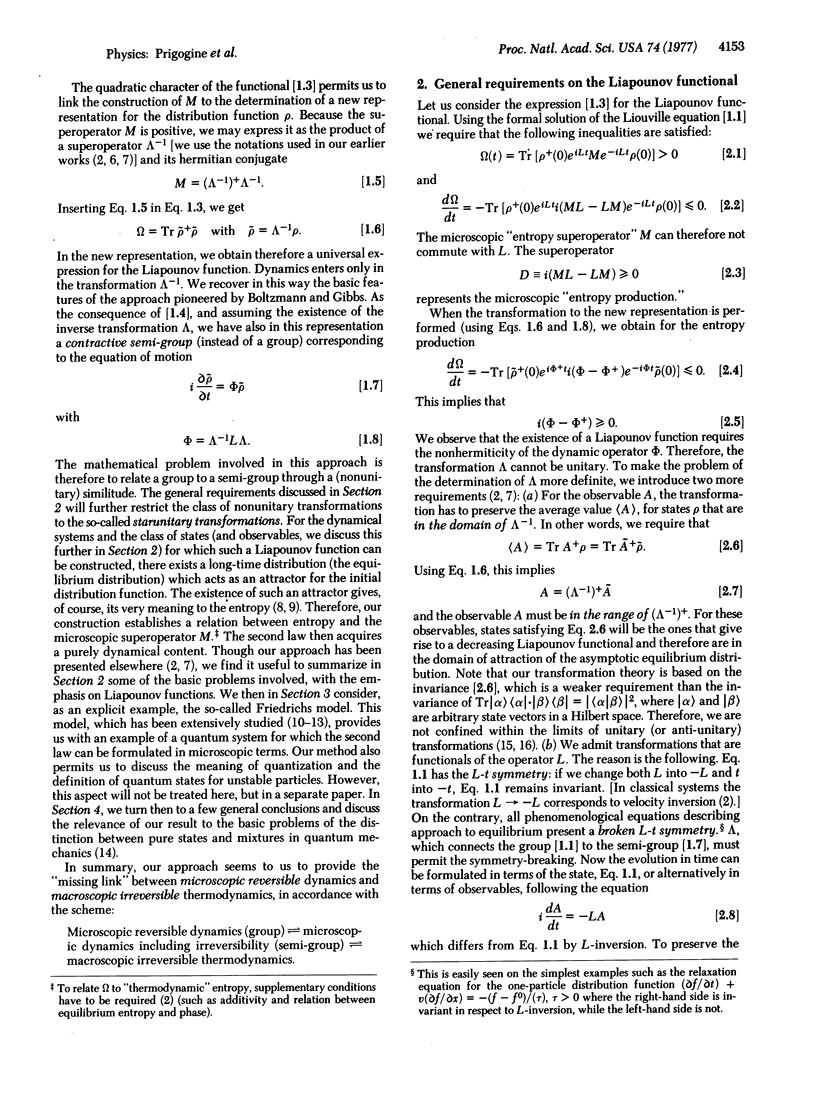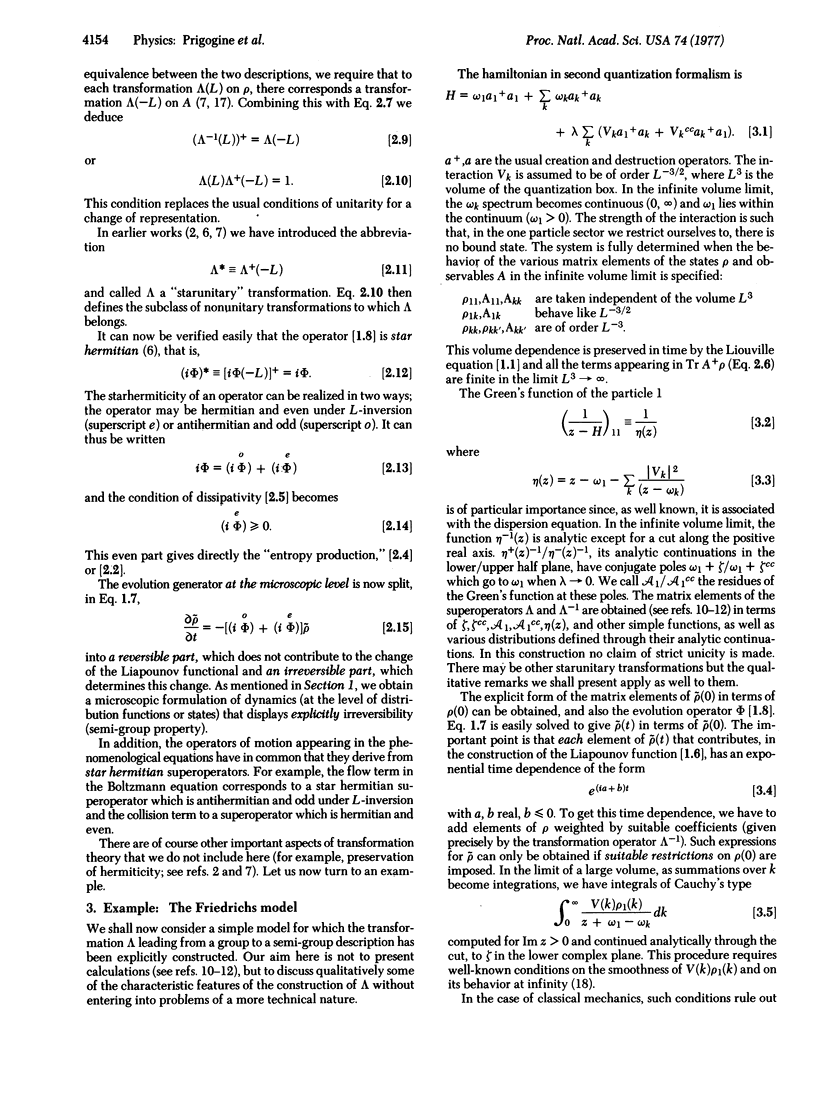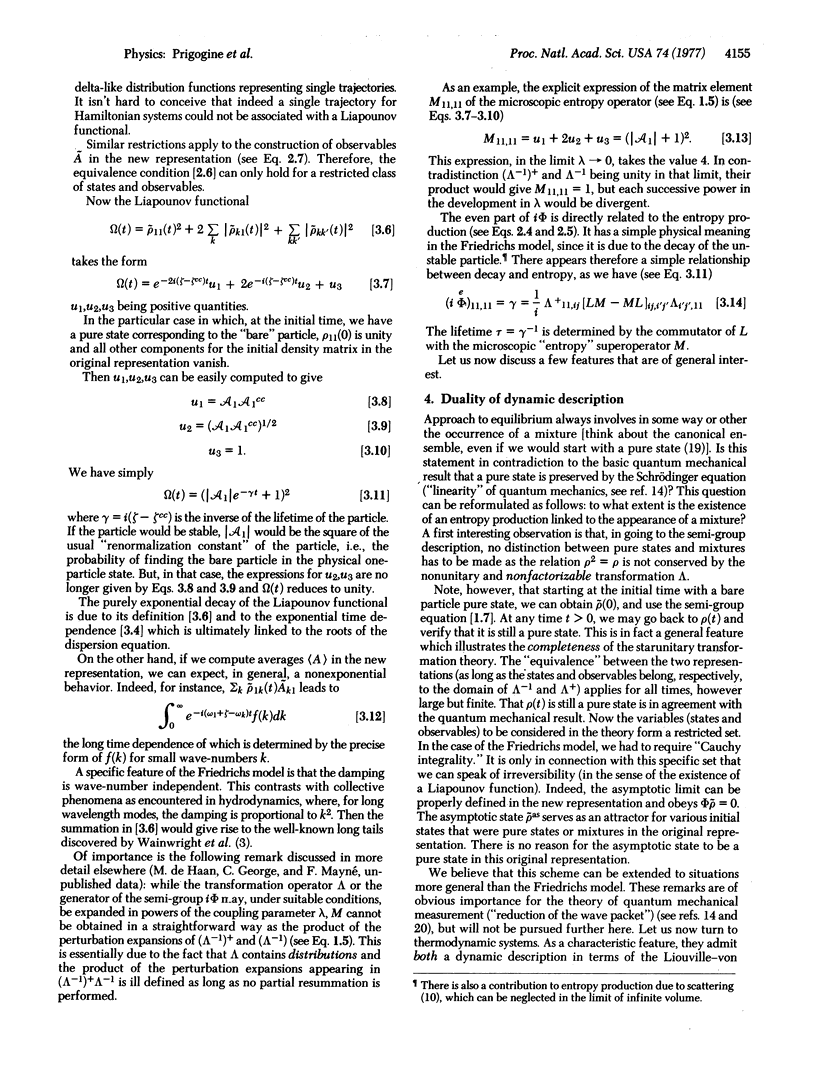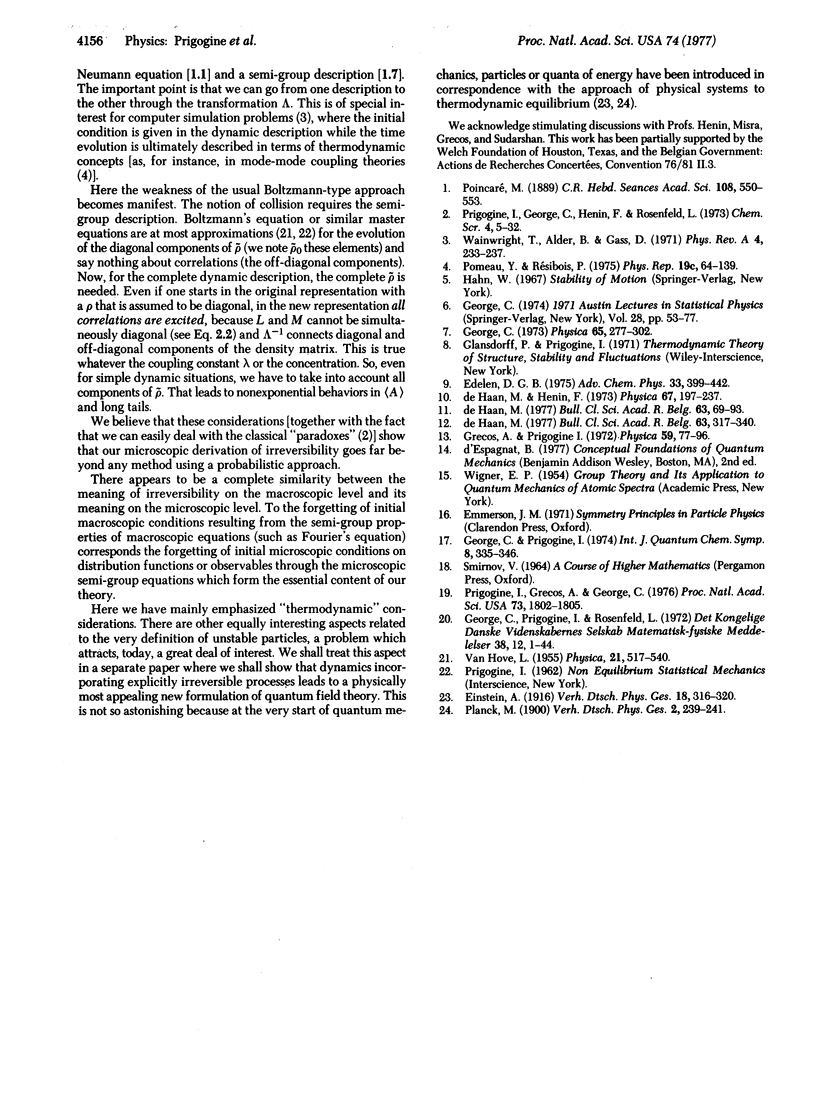Abstract
The microscopic theory of irreversible processes that we developed is summarized and illustrated, using as a simple example the Friedrichs model. Our approach combines the Poincaré's point of view (dynamical interpretation of irreversibility) with the Gibbs-Einstein ensemble point of view. It essentially consists in a nonunitary transformation theory based on the symmetry properties of the Liouville equation and dealing with continuous spectrum. The second law acquires a microscopic content in terms of a Liapounov function which is a quadratic functional of the density operator. In our new representation of dynamics, which is defined for a restricted set of observables and states, this functional takes a universal form. We obtain, in this way, a semi-group description, the generator of which contains a part directly related to the microscopic entropy production. The Friedrichs model gives us a simple field theoretical example for which the entropy production can be evaluated. The thermodynamical meaning of life-times is explicitly displayed. The transition from pure states to mixtures, as well as the occurrence of long tails in thermodynamic systems, are also briefly discussed.
Keywords: Friedrichs model, statistical mechanics, nonequilibrium entropy
Full text
PDF




Selected References
These references are in PubMed. This may not be the complete list of references from this article.
- Prigogine I., Grecos A. P., George C. Kinetic theory and ergodic properties. Proc Natl Acad Sci U S A. 1976 Jun;73(6):1802–1805. doi: 10.1073/pnas.73.6.1802. [DOI] [PMC free article] [PubMed] [Google Scholar]


